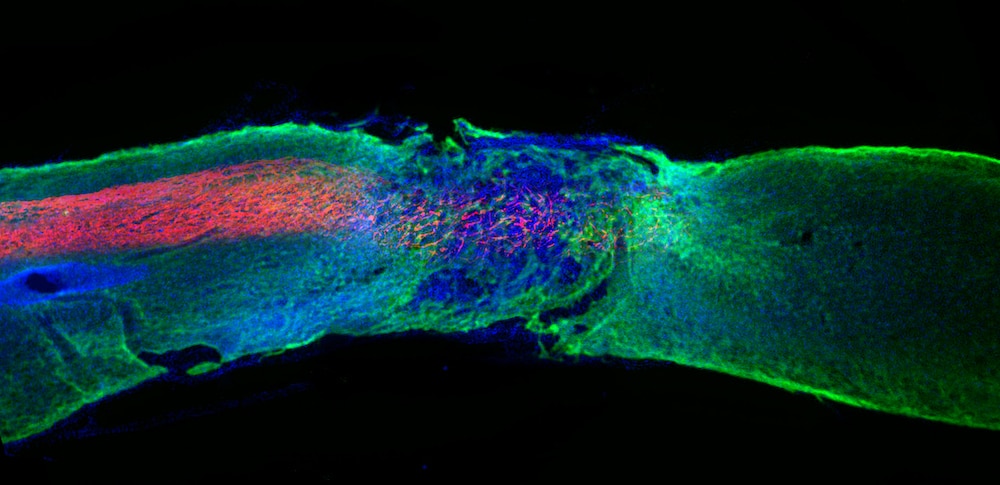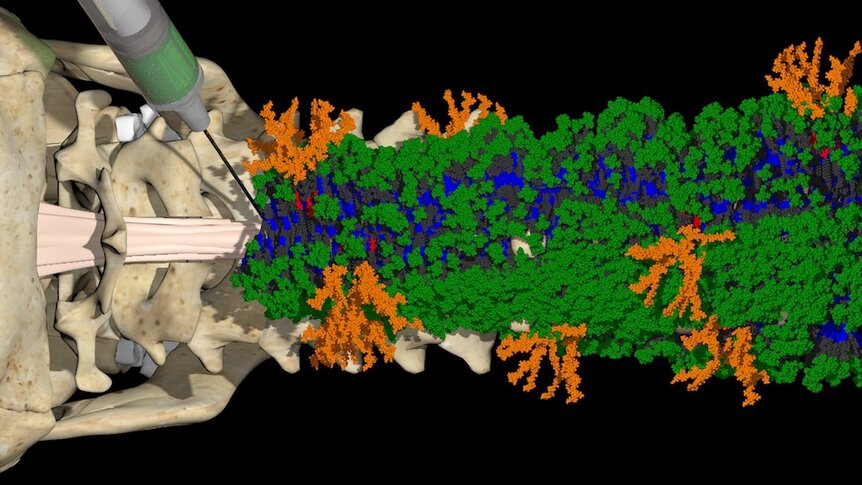Create a free profile to get unlimited access to exclusive videos, sweepstakes, and more!
Paralyzed mice regained the ability to walk thanks to nanofiber scaffolding injections
Therapy improves healing factor in paralyzed mice by making cells communicate

Unlike some creatures in the animal kingdom, humans are comparatively terrible at healing our injuries. Cuts and burns result in scarring, and any body parts lost — with the notable exception of the liver — are permanently gone.
Most times our lackluster healing ability isn’t a huge barrier to continuing to live an ordinary life, but injury to certain body parts results in drastic changes to lifestyle which may not ever be recovered. Nowhere is this clearer than in injuries to the nervous system.
Injuries to the spinal cord often lead to permanent loss of limb function due to the buildup of scar tissue around the injury site and the inability of tissues to effectively regenerate and reconnect, but all of that might be about to change.
A recent paper by Samuel Stupp from the Simpson Querrey Institute for BioNanotechnology at Northwestern University, and colleagues, describes a new therapy which improves the ability of the spinal cord to heal itself after catastrophic injury. Their findings were published in the journal Science.
Scientists developed an injectable therapy containing nanofibers capable of matching the structure around the spinal cord and promoting regrowth. To test this new therapy, they injected the liquid into the spinal columns of mice 24 hours after the onset of a severe spinal injury. The mice where then observed over a period of weeks to quantify healing of their injuries.
In control mice who were injected with a saline solution, very little regrowth was observed. However, in those mice who received the liquid scaffold therapy, regrowth was a full 50 times more robust than under ordinary circumstances.
The contents of the injection are impressive, but the real trick was in getting the fibers to move. One of the challenging components among spinal injuries is that cells and nerves move around, making it difficult to find them even with stimulating therapies. Even if you have a therapy capable of delivering a regenerative therapy, it can’t do its job if it’s incapable of making a hand-off.
To solve for this problem, scientists designed the components of this new injection to move in a way which mirrors that of cellular movement, increasing the probability that the fibers will find the appropriate cells.
Once they do make contact a few critical things happen. The fibers send messages to the body, which results in a choreographed dance of microscopic activities. The axons begin regenerating and cells begin multiplying. During multiplication new blood vessels are formed, delivering crucial blood flow to the damaged area to promote healing. Lastly, but importantly, the formation of fibrous scar tissue slows down, keeping the road open for the body to rebuild.
In mice who received this therapy, many of them regained the ability to walk and it happened quickly. Within three weeks, mice treated with this bioactive therapy showed significant recovery as measured by increased stride and number of steps. In short, the treated mice regained the ability to walk.
Scientists also tested the therapy on cultured human tissues in a laboratory and likewise observed improved cell multiplication and the formation of new blood vessel networks, suggesting the therapy has some promise in working to improve healing in human spinal injuries as well as mice.
Introduction of the nanofibers into the spinal column did not appear to result in any negative side effects and the materials naturally break down over the course of about 12 weeks before being absorbed into the body.
When it comes to healing spinal injuries, it seems as though what our bodies have is a failure to communicate. Severe injury of the spinal cord severs the lines of communication, preventing the body from healing in any meaningful way.
These newly developed bioactive scaffolds serve to bridge that gap by creating a path of communication by which healing can begin and then sending signals which enhance the body’s natural ability to regenerate.
They’re almost like a marriage counselor for nervous system tissues who have separated and are on the verge of divorce. Just like macro-scale relationships, it’s only after we begin to communicate that the healing can begin.



























